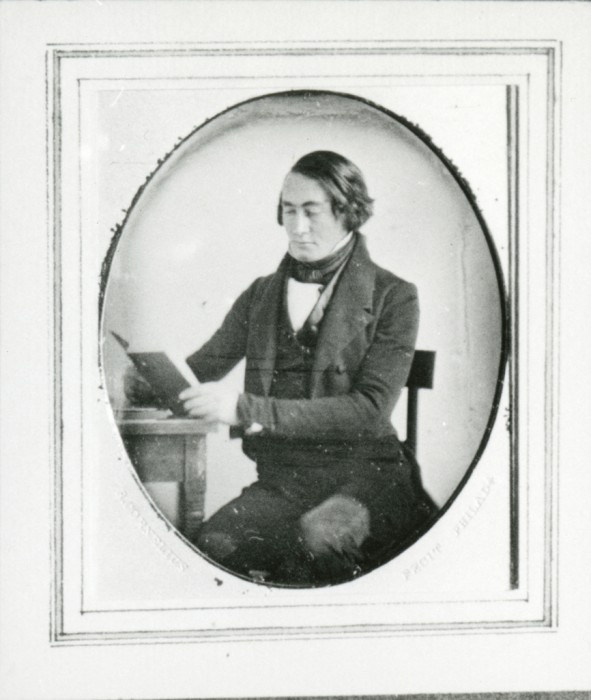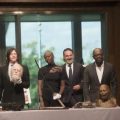Today in Smithsonian History: October 20, 1983

A portrait of Martin Hans Boyè, a chemist who emigrated to the United States in 1836 from Denmark, which was on display in the exhibit, “Robert Cornelius: Portraits from the Dawn of Photography,” at the National Portrait Gallery, devoted to the work of the pioneering daguerreotypist, Robert Cornelius.
October 20, 1983 Robert Cornelius: Portraits from the Dawn of Photography opens at the National Portrait Gallery, devoted to the work of the pioneering daguerreotypist, Robert Cornelius (1809-1893).
Born to a Dutch immigrant, Robert Cornelius attended private school as a youth, taking a particular interest in chemistry. In 1831, he began working for his father specializing in silver plating and metal polishing. He became so well renowned for his work, that shortly after, Cornelius was approached by Joseph Saxton to create a silver plate for his daguerreotype of Central High School in Philadelphia. It was this meeting that sparked Cornelius’ interest in photography.
With his own knowledge of chemistry and metallurgy, as well as the help of chemist Paul Beck Goddard, Cornelius attempted to perfect the daguerreotype. Around October 1839, Cornelius took a portrait of himself outside of the family store. The daguerreotype produced shows an off center portrait of a man with crossed arms and tousled hair. This self-portrait of Robert Cornelius is one of the first photographs of a human to be produced.
![The first photographic portrait image of a human ever produced. "Robert Cornelius, head-and-shoulders [self-]portrait, facing front, with arms crossed", approximate quarter plate daguerreotype, 1839 via The Library of Congress.](https://torch.si.edu/wp-content/uploads/2014/10/RobertCornelius-533x700.jpg)
The first photographic portrait image of a human ever produced. “Robert Cornelius, head-and-shoulders [self-]portrait, facing front, with arms crossed”, approximate quarter plate daguerreotype, 1839 via The Library of Congress.
Cornelius would operate two of the earliest photographic studios in the U.S. between 1841 and 1843, but as the popularity of photography grew and more photographers opened studios, Cornelius either lost interest or realized that he could make more money at the family gas and lighting company.
Courtesy of Smithsonian Institution Archives
Posted: 20 October 2019
- Categories:








